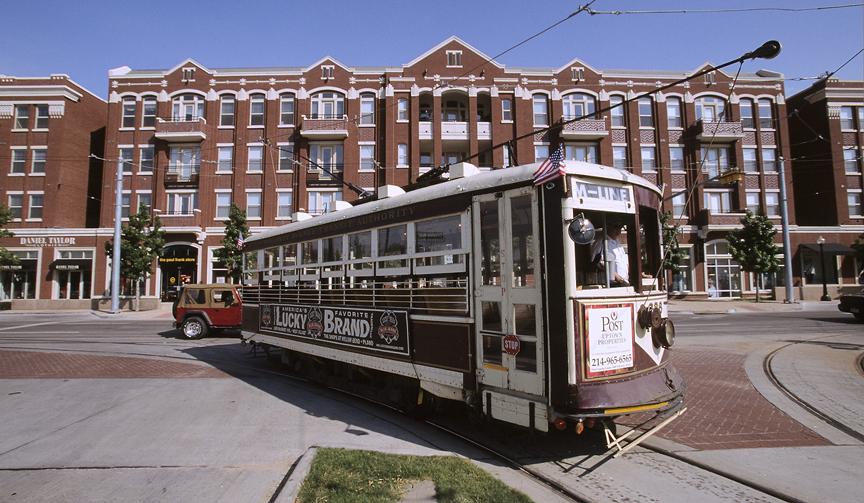Strategy of the Month: Equitable Neighborhood Change in Transit-Rich NeighborhoodsFebruary 2011 The growing popularity of transit-oriented developments or “TODs”, which are compact, mixed-use developments oriented around transit stops, and the resulting demand for housing close to public transportation can translate to higher housing costs and the displacement of existing low-income households. The Dukakis Center for Urban and Regional Policy at Northeastern University recently released a report, "Maintaining Diversity in America’s Transit-Rich Neighborhoods: Tools for Equitable Neighborhood Change," that addresses this issue by analyzing patterns of change in 42 neighborhoods across the nation following the introduction of mass transit. The report finds that gentrification (characterized by rising housing costs and an increased number of higher-income and vehicle-owning households) is a recurrent pattern in the majority of transit-rich neighborhoods (TRNs). In one instance, the report finds that the median housing value of owner-occupied homes in neighborhoods served by light rail rose 500 percent between 1990 and 2000. 
To help localities minimize the negative consequences of gentrification and “shape equitable neighborhood change” in TRNs, the Center has developed an online Toolkit for Equitable Neighborhood Change in Transit-Rich Neighborhoods. The toolkit contains planning, housing, and transportation management strategies that can be implemented to maintain or improve housing affordability, transit ridership, and the socio-economic diversity of TRNs. According to the toolkit, local government officials and policymakers should address the potential for neighborhood gentrification and decreased housing affordability at the outset of planning for new transit. To help ensure the availability of housing for a mix of incomes in neighborhoods impacted by new transit, the toolkit suggests that jurisdictions develop a comprehensive planning process with community input and interagency cooperation for TODs. To counteract the effects of rising land values, which can inhibit affordable housing production in proposed transit corridors, the toolkit recommends establishing funding sources for land acquisition through property acquisition loan funds, housing trust funds, and tax increment financing districts. Additionally, inclusionary zoning requirements and regulatory incentive programs (such as the state of Massachusetts’ Chapter 40R Smart Growth Districts) are presented as useful tools for promoting the development of new affordable housing. To promote transit ridership, discourage vehicle use, and lower housing costs, the toolkit suggests reducing parking space requirements, adopting car sharing programs, and “unbundling” or separating the cost of parking spaces from housing prices. For each of the proposed policies, the toolkit presents examples of best practices from across the nation. For more information on this toolkit and a link to the original document, please visit https://www.huduser.gov/rbc/search/rbcdetails.asp?DocId=2120. Those with an interest in this subject can also access a web-based action guide, developed by the Center for Transit-Oriented Development and sponsored by the Federal Transit Administration, which looks at strategies for achieving equitable, mixed-income transit oriented development (called MITOD, or Mixed-Income Transit Oriented Development) at https://www.huduser.gov/rbc/searchrbc/rbcdetails.asp?DocId=2079. We hope this information will assist communities as they continue to look for ways to promote affordable housing in transit-oriented developments. If you have successfully implemented affordable housing programs of any kind, would like to share resources, or require assistance in identifying additional policy tools, research, or strategies available through our searchable online Clearinghouse database, email us at rbcsumbit@huduser.gov, or call us at 1-800-245-2691 (option 4), or visit our website at www.regbarriers.org. Feel free to forward this message to friends and colleagues with an interest in affordable housing. |

|
|
|

